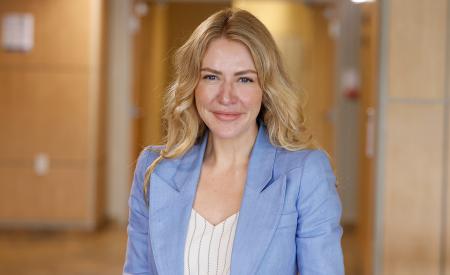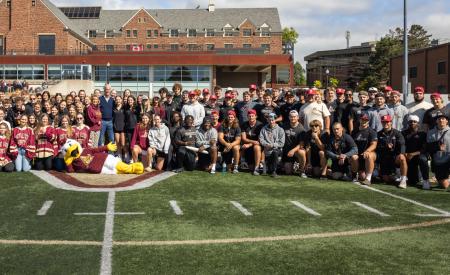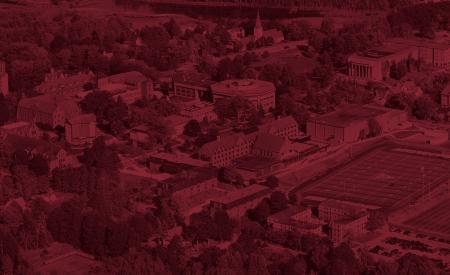Mapping space for marginalized groups
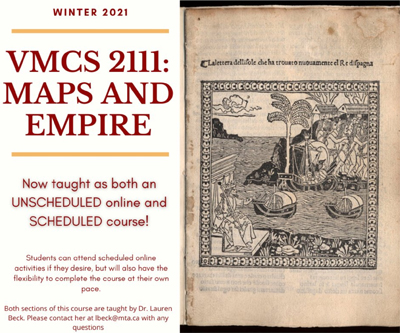 Students in Mount Allison University’s Maps and Empire class, taught by Dr. Lauren Beck, Visual and Material Culture Studies and Hispanic studies professor, undertook an exciting project this term to learn about experiences of different groups in society and help share these perspectives.
Students in Mount Allison University’s Maps and Empire class, taught by Dr. Lauren Beck, Visual and Material Culture Studies and Hispanic studies professor, undertook an exciting project this term to learn about experiences of different groups in society and help share these perspectives.
The class assignments aimed to draw attention to the experience of marginalized groups, including women, Black and Indigenous peoples, newcomers, and members of the LGBTQ+2 community, and help share these with a wider audience. Students researched and interviewed individuals about their lived experiences, bringing them together in a series of profiles of various formats.
“I was really pleased with the variety of the assignments. We had videos, books, and of course maps, sharing many different lived experiences, both in our local community and elsewhere. It was interesting to learn about these individuals’ stories and experiences,” says Beck, who is also the Canada Research Chair in Intercultural Encounter.
Fourth-year Arts student Tori MacBeath completed her project — Places where women feel comfortable in Sackville — in video form. MacBeath interviewed ten women about spaces they felt comfortable in and why. The final project put all responses together in a short animated video.
“Partaking in this course encouraged me to critically examine the spaces that I 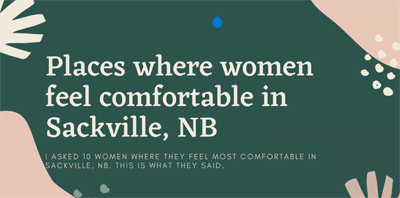 occupy,” says MacBeath. “This assignment in particular allowed me to reflect on the positive and supportive community I am surrounded by in Sackville, and the qualities that make me feel that way.”
occupy,” says MacBeath. “This assignment in particular allowed me to reflect on the positive and supportive community I am surrounded by in Sackville, and the qualities that make me feel that way.”
Beck and her students plan to share the research with community groups to help offer support for further discussions and reflection.
New this year, the Maps and Empire course is a second-year course offered as part of the Visual and Material Culture Studies program. The course looks at how maps are linked to colonialization and seeks to focus on groups that are missing historically in these documents.
“Throughout the class, we’ve examined several thousand years of mapping in the western and non-western worlds, looking at how maps work and what types of knowledge they express,” explains Beck. “Through this assignment and throughout the course, students have looked at the uses and implications of mapping as an instrument that furthers the ambitions of monarchs, leaders, and even academics, which has enabled them to reassess the ways in which they view maps and their representation of the world.”
Beck also used the ‘flipped classroom’ approach to deliver part of the class. Through an online, scheduled and unscheduled format, students watch prerecorded lectures and submitted questions or points for discussion. The majority of scheduled class time was then used for this curated discussion.
“We were able to devote more time to class and small-group discussions this way, which I think was a benefit of teaching virtually,” says Beck. “Students had more opportunities to participate and generally seemed to feel more comfortable contributing to class discussions in this way.”
The projects are also being shared on the program’s social media channels this spring: https://www.facebook.com/vmcsmta/; https://twitter.com/vmcs_mta
About Visual and Material Culture Studies at Mount Allison
Visual Communication and Culture develops visual literacy skills ― decoding visual communication, describing and interpreting images, using visual materials proficiently and creatively, and understanding the impact of visual culture. Degree major, minors, honours options, as well as a Certificate in Visual Literacy and Culture are currently available to students (mta.ca/programs/vmcs)


